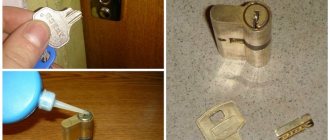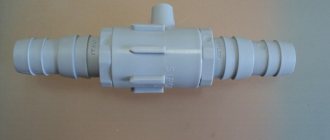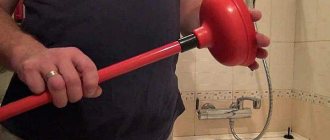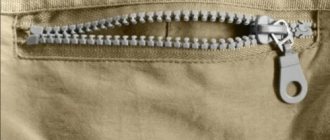Features of siphon installation taking into account the type
A siphon is an indispensable element of a plumbing fixture, so every bathtub is equipped with it. Its installation under the bathtub is considered quite complicated, so it is important to choose the right type of equipment wisely.
Siphons are divided into different types, and they differ in design, appearance, as well as the material from which they are made. All these parameters directly affect the rules and specifics of the installation, so before assembling the siphon, you should decide on its features.
- manual is represented by a regular stopper. To open and close the drain hole, it is necessary to apply some effort to insert and remove this element;
- semi-automatic is equipped with a stopper, which is adjusted by a plug or handle, and these elements are located next to the overflow. Installation of such a product is considered a fairly simple job;
- the automatic one is equipped with a plug connected to a special control button with a special cable. It is built into the overflow hole, so you only need to press a button to open or close the hole. Some models even provide automatic opening of the plug if water reaches the overflow hole. Assembling a siphon for a bath of this type is considered quite complex.
If the installation is carried out on an acrylic bathtub, then it is advisable to choose a plastic structure, but for plumbing fixtures made of metal, a copper drain is selected.
According to their appearance, siphons are divided into:
- corrugated, consisting of a flexible tube that can take any desired shape;
- flat, where pipes of different diameters are connected;
- bottle ones, equipped with a hydraulic shutter shaped like a bottle, and it is to this that the sewer pipes are connected, and this type is usually used in the kitchen, not the bath.
This is interesting: The kitchen sink is clogged, what to do: folk and mechanical methods, how to clean it
Thus, each type of siphon has its own characteristics and parameters, so before learning how to install a siphon on a bathtub, you should decide which design will be used for these purposes.
Semi-automatic
Replacing a bathroom siphon, which is automatic, is considered the most popular process, since this equipment is considered inexpensive and easy to use. It is taken into account that this design is non-demountable, and certain difficulties arise when connecting the sewer system and siphon.
What kind of lighting do you prefer?
Built-in Chandelier
Installing a drain in a bathroom is carried out in the following steps:
- Initially, you should check the integrity and quality of the existing semi-automatic equipment, since the control rod should not jam, and the plug should fit as tightly as possible to the seat;
- a siphon is installed on the bathtub, equipped with a convenient control mechanism, as well as an overflow;
- the outlet pipe of the product is connected to the receiving section of the sewer system;
- the correct location of each element of the existing siphon is checked, and if there are any distortions, then alignment should be promptly carried out, since various irregularities not only make the plumbing fixtures unattractive, but also reduce the comfort of its constant use;
- the threaded connections of the outlet tube and the siphon are connected, for which a rubber gasket should be used, and it can be flat or conical;
- If you use the gasket correctly, you won’t even need to use sealant for a reliable connection.
Expert opinion
It-Technology, Electrical power and electronics specialist
Ask questions to the “Specialist for modernization of energy generation systems”
What to do if the plug in the bathroom is leaking water? Poor-quality siphons quickly fail, and such a system will have to be replaced entirely; the machine does not provide for repairs in parts. Ask, I'm in touch!
How to change a siphon under a bathtub: types of equipment and self-installation
Drain and overflow are the only engineering systems used in the bathtub. They allow you to control the intake of water and can drain it if necessary or if the bath is overfilled. If you look at the old models, they consist of two elements (a siphon and an overflow), plus many different tubes that are connected to each other.
They seem to have a simple design, but at the same time complex, due to the large number of additional elements. Modern drain systems use significantly fewer parts, which greatly simplifies installation and management.
Let's look at such important questions: how to change the siphon under the bathtub, how it works, what it consists of, and what types of this device can be found.
Bath siphon device
Conclusion
If you do everything according to the instructions, then you definitely shouldn’t have any difficulties. Naturally, this statement is true if the purchased system is fully equipped. Therefore, before changing the old siphon, you need to decide on a new one. Also, cheap kits often do not include a hose and must be purchased separately.
Experts recommend using a corrugated hose in all cases, as it has a huge number of advantages. First of all, it is flexibility and ease of installation. The second thing I would like to mention is its resistance to aggressive environments (acids, alkalis, hot water, etc.). Thirdly, there is no need to adjust the length to the nearest millimeter.
Also, when purchasing, it is recommended to consult with the seller about manufacturers of drainage systems for bathtubs. The wrong choice can be made due to the large assortment. Well, if you did everything correctly, then installation will not be difficult, since any owner can do this work.
Cleaning the drain siphon yourself
A siphon is an element designed to protect the home from the penetration of unpleasant odors from the sewer. This is ensured by the constant presence of water inside the device. This water seal also helps protect the pipes from large debris getting into them.
Siphons are classified according to their design, purpose and materials from which they are made. Structurally, the following types of these plumbing elements are distinguished:
- Bottle type. The most common are for connecting a sink to a sewer. They consist of supply pipes and a siphon settling tank, which are made in the form of a bottle. This design is characterized by high throughput, ease of operation and cleaning. Among the disadvantages, it is necessary to highlight the large overall dimensions;
- Flat. They consist of alternately interconnected pipes of different diameters. At the bottom of the device, the pipes form a kind of drop (elbow), in which a water lock is formed during operation of the device. Such a system is efficient and reliable in operation, easy to clean and perform preventive maintenance. Most often installed in the bathroom;
- Corrugated. The design resembles flat ones, but they do not consist of several pipes, but of one flexible one. This type of design is known for its versatility, but its operation can bring some inconvenience. Due to the corrugated inner surface, debris and scale accumulate in the siphon, which contributes to its rapid failure.
Siphons are used to connect toilets, bathtubs, kitchen sinks, showers and other consumers (washing machines or dishwashers) to the sewer system. According to their purpose, they can be divided into single (used exclusively for connecting one consumer) and branched. The latter is used to connect several drain pipes.
Corrosion-resistant materials are used to manufacture these elements. These are copper (brass), cast iron and plastic. Of course, there are also options made of alloy steel, but they are considered not durable enough.
Copper elements are presentable and can complement designer bathrooms. Their internal surface is absolutely smooth, which indicates the high efficiency of the siphon. But they are the most expensive; Cast iron elements were popular during Soviet times. They are durable, resistant to aggressive external influences, and are not afraid of corrosion. The most important disadvantage of such a device is the lack of flexibility - such siphons cannot be installed on non-standard connections; Plastic ones are considered universal and durable. They do not rust and can withstand temperature changes and even shock loads.
But when choosing a plastic settling element, you must definitely pay attention to the thickness of the walls and the smoothness of the inner surface. The main advantages are the affordable price and the ability to install on any plumbing fixtures.
Bathtub cleaning
It turns out that a person loses about a hundred hairs per day. And if short male hairs do not pose a threat to the sewer system, then long female hairs clog the sewer quite quickly, forcing you to disassemble the siphon several times a month, eliminating blockages.
Dismantling the siphon is an unpleasant procedure when you are in a half-bent state trying to get the contents, simultaneously brushing aside the dirty water flowing towards you. Of course, you can also use household chemicals, but they can damage the plastic parts of the siphon itself.
In this case, only mechanical cleaning remains. For example, you can use a plunger to remove a blockage. To do this, pour water into the bath, closing the hole. Then the plug is removed, and a plunger is placed in its place, which is used to make several vigorous vertical movements. The dirt will rise to the top and will be easy to remove.
The hair in the siphon is wound onto a cable and then taken out with it. The spectacle is unpleasant, but effective, since the remaining part of the blockage is easily washed down the drain with water.
However, when using a cable, there is a possibility of damaging the pipe if it is made of chrome steel, brass or plastic. Therefore, in this case, it is better to use a special “claw”, which we recommend using.
This device is inserted into the sewer siphon, then the spring on the handle should be pressed. In this case, the “claw” shrinks. If a blockage is captured, you will feel heaviness when trying to pull it out. You continue to pull and pull out the blockage that was preventing the water from draining. DIY bathtub cleaning done.
Of course, such devices can not only be ordered in China, but also found in our markets. It costs a penny. In addition, it doesn’t cost a real craftsman anything to build such a mechanism from, for example, a cocktail straw: just cut it in a spiral with scissors, and you’ll get a long spring, which can also be used to remove clogs from hair.
We recently told you why you should leave a brush under the toilet lid for 5–10 minutes. They also shared 10 amazing tips on how to clean up your home. Use our advice, and your home will delight you with impeccable cleanliness.
How do you deal with blockages in the bathroom? Share your experience.
Design
Before you get interested in how to remove a siphon from a shower stall, let’s get acquainted with its features. This element is also called a “ladder”. This product can be used to connect various plumbing fixtures. It is not used for structures with a built-in water lock and those that are connected directly to the sewer system. The following elements are suitable for shower trays: 1. Bottle (flask) trays. The functional element here is a special compartment with the shape of a bottle. These siphons are installed for high shower trays. 2. Pipe. They are assembled from several pipes of different lengths, which are connected by adapters. They are characterized by compact dimensions, therefore they are in demand for almost all shower cabins. 3. Corrugated. These are also pipe devices, but instead of hard ones, soft pipes are used that bend easily. They have a rough inner surface, which causes them to become clogged faster, which is why they are less popular. The best option for a shower stall is a pipe siphon, which has suitable characteristics and small dimensions.
How to choose the right siphon for a shower stall?
Types and features of siphons
If for some reason the drainage system does not cope with its functions, it is customary to replace the siphon. To dismantle the drain, you need to understand how to do it correctly. In some cases, it is enough to repair the drain or clear the blockage using a plumbing product. Blockages can cause your bathtub to leak.
Drain cleaning products can remove blockages and solve the issue of unhindered water flow. One of the symptoms that the cause of the leak is a blockage is the formation of an unpleasant odor from the sewer. If the use of this kind of means does not bring results, it was not possible to repair the drain, the only correct way is to replace the siphon.
Based on the materials from which this sewer equipment is made, these devices are divided into plastic and metal models. Each of them has distinctive features.
Models made of plastic are distinguished by their low price, long service life, and are not afraid of exposure to chemical elements. However, minor irregularities during the manufacturing process can lead to leakage. In addition, such spare parts are quite fragile.
For the production of metal models, copper, brass, and stainless steel are most often used. Such parts are expensive, difficult to install, get clogged quickly, but have an impressive appearance. These models are used to connect expensive bathtub models to the sewer system.
Types of siphons according to operating principle
Based on the principle of operation, there are manual, semi-automatic and automatic siphons. Let's take a closer look at each type:
- Manual siphons are characterized by simplicity of design. They consist of a thin chain or flexible cable. A lid is attached to them, which serves as a lock for the drain hole. When you need to drain the water, you just need to pull the chain, after which the lid will rise and release the drain. This system is very cheap and easy to use, but can cause some inconvenience in operation. In particular, not everyone likes to get their hands wet while uncorking the drain;
- Semi-automatic siphons consist of a more complex mechanism: a movable handle and a locking cap. The handle is connected to the lid using a flexible hidden cable. When you want to drain the water, just turn the handle, it will move the lid and the drain hole will open. When drawing water, you also need to turn the handle and plug the drain. The principle of operation allows you not to get your hands wet in water again. A siphon with such an overflow (water drainage) costs a little more than a manual one, but is considered more convenient to use;
- The automatic siphon has no competitors in terms of comfort. There are two types of this design: click-clack and with a handle. Such systems consist of a special control mechanism, a cable, a locking element and a handle. A click-clack machine consists of a flat cover connected to a cable. When pressed, it changes its position. For example, if you press twice, the shutter will open, if once, the lid will close the drain hole. The device with a handle completely replicates the design of the semi-automatic device, but is equipped with an additional protection system.
The main advantage of an automatic siphon is its “smart” operating principle. The automation can be configured so that when the pressure in the bathroom reaches a certain level, the drain hole opens and excess water flows into the sewer. This protects against flooding and problems with horizontal overflow (which, due to its diameter, often cannot handle large amounts of water). For example, click-clack siphons are also capable of closing “on their own” after the pressure reaches the permissible limit.
Types of siphons and their features
The choice of siphon is influenced by the following factors:
- Installation location;
- The amount of water that the siphon should pass through.
Bath siphons
Siphons designed for installation under the bathtub consist of two pipes - drain and overflow. In front of the siphon elbow, in which the water seal is located, both pipes are connected into one. Most models of bathtub siphons allow for adjustment, since the drain and overflow holes on different models of bathtubs may be at different distances.
Today there are bath siphons with automatic and semi-automatic drain adjustment. In the first case, to open the drain plug, you just need to press the button, in the second, you need to turn the handle located at the level of the overflow hole.
Siphons for installation under a bathtub are made of polymer materials or metal, most often copper alloys. The latter are, of course, more expensive, but if you plan to purchase an automatic drain, then it is better to take a metal piping, since the plastic ones are unreliable and often break. When purchasing a regular bathtub overflow drain, you can safely buy a plastic model; it will serve for quite a long time.
Shower siphon
The siphon, which is installed under the shower tray, must have sufficient capacity. Such siphons are often called ladders. There are drains that are mounted directly into the floor; in this case, installation of a pallet is not required.
Siphons for washbasins
Siphons for sinks are available in different modifications.
- Pipe models. This is a siphon in the form of a rigid curved pipe. For ease of cleaning, some models have a plug installed in the lowest section of the siphon.
- Corrugated models are convenient because they can be adjusted in length, which greatly facilitates installation. However, such a siphon becomes clogged with debris faster than others, since the inside of the tube is not smooth.
- Bottle siphon models have a fairly rigid design. The siphon body itself is shaped like a bottle and has a twist-off lower part, which makes cleaning easy.
- Siphon in a box. This type of siphon is used when you need to free up space under the sink. The siphon itself is installed in a hole made in the wall, and is connected to the drain hole by a thin tube.
Siphons for household appliances (dishwasher or washing machine)
As a rule, the siphons described above in a box are used for household appliances. The siphon itself is installed on the wall in a convenient place, and the drain outlet pipe is connected to it under a decorative cover.
Sometimes household appliances are connected to the sink siphon. In this case, select a model with a larger capacity and an additional pipe for connecting the drain hose.
Siphons for kitchen sinks
As a rule, bottle-type siphons are installed on the sink, since they are the most practical and fairly easy to clean. The fact is that kitchen drains may contain grease, which quickly clogs siphons, reducing their capacity.
Today, sinks with two or three compartments are often installed in the kitchen. Naturally, it will be unprofitable to install a separate siphon for each drain, so special double (or triple) siphons are used that have a common body and several outlet pipes. When installing household appliances in the kitchen that require connection to the sewer system, it is necessary to purchase siphons with additional outlets.
Replacement
Let's move on to how to change the siphon under the shower stall. It is not recommended to buy cheap products, since in order to replace a failed siphon, you will have to remove the pan. And to do this, of course, not in all cases, you have to dismantle the shower stall. Not all parts can be reused later, so you should immediately choose a reliable product that will not require frequent maintenance. No matter how reliable the equipment is, it cannot last forever. To replace the siphon, first remove the decorative panel from the bottom of the tray. It is often secured with snap-on clips. To open them, you should press the panel around the periphery with slight force. Dismantling is carried out as follows: 1. The elbow is detached from the external sewer pipe. 2. The elbow is unscrewed from the pallet, for which an adjustable wrench or washer is suitable. 3. The overflow, if any, is disconnected. 4. The drain is removed.
The next step is how to disassemble the shower siphon for cleaning. The sequence of work looks like this: 1. Place a container under the siphon into which the remaining dirty water will drain. 2. Unscrew the union nut. It is better to do this slowly so that the liquid does not get on the floor. 3. Pour out the remaining water. 4. Remove the gasket from the rubber.
Appearance of the disassembled device
Read also! Maybe
How to remove a plug from a bathroom with a modern mechanism?
Situation: there is a stopper in the bathroom, which is raised/lowered using a toggle switch (twist) under the faucet. The toggle switch (twist) stopped functioning when the plug was in the down position (plugged). It is not possible to pick up the plug. Any ideas?
You need to spin the wheel
You need to turn the wheel located on the back wall of the bathroom (which protects it from overflowing) counterclockwise. And the cork will immediately pop out on its own!
Same story, traffic jam and
Same story, the cork and the wheel do not function together, so I tied a rope to the cork and usually pulled it. But today everything went a little wrong and the plug along with the rope was sucked into the drain and a vacuum was formed. I tried to pry it off with a knife, a spatula, even a pill blister - it was no use. I don't have a plunger
Thank you very much for
Thank you very much for the tips. I was so angry, I took a bath, everything was fine, but I couldn’t unscrew the plug. A small suction cup helped, it’s good that I found it in the kitchen! The cork came out like a cute little thing!
Thank you. there is no husband,
Thank you. There is no husband, the child was bathing. The other day the plug stopped working well. and now it is completely stuck in the closed position. I scooped out the water and picked it out with a knife on the 10th attempt. but, damn it, it stopped catching the plug altogether. Thanks for your advice! I unscrewed the bolt on the plug more, voila! everything is working! and opens and closes. I'm my own plumber!
But I didn’t succeed either
But I couldn’t do it with a wood blower, or a knife, or anything. I had to consult the installer. He advised to remove the protective screen (unscrew the screws and it comes off). Then remove the plug in the siphon and pull out the plug. And when I pulled out the plug, I also pulled out a bunch of garbage underneath it! I was even surprised how much crap had accumulated there in just a year! And this plug itself broke. Now I’ll buy a regular one, with a chain, so as not to suffer!
A whole bath of water. the cork is not
A whole bath of water. the plug did not open. I didn’t drain the water, the plunger-suction cup helped... a few movements and VOILA. Thanks to the Internet. Several times already, similar sites and reviews from people have helped to cope with various problems. So write.
I live 2500 km from my parents,
I live 2500 km from my parents, my mother called that the bathtub was full and she couldn’t get the plug out. Go straight to the Internet, and that’s it. I called and told him about the plunger, two or three movements, the issue was resolved. Thank you very much.
I'm that kind of mom too. Thank you
I'm that kind of mom too. Thank you very much for writing on the Internet. I managed! Not right away, but it worked! Thank you very much!
Pour into basins, pans
Empty basins and pots with water from the bathroom and pour boiling water into it. The cork will fly out both literally and figuratively, like a scalded one.
I just took it out myself.
I just took it out myself. First, remove all the water from the bathroom. Then take a water gun (probably everyone has one lying around) and start sucking out the cork. In a second, the cork will be in your hands.
How to open the lid on a sink? Photo
What to do? How to open the lid? I tried to hook it with something, but there were no holes.
Best answer
Summary: 1. If you can’t remove it with water, then. 2. Scoop out the water. 3. Remove the siphon. 4. Push out the plug from below. 5. Let’s look at the reason for the “wedge”. 6. Eliminate. 7. Put the siphon in place. 8. tie a “tail” to the cork to remove it. You may have to drill. 9. We use it.
Classification
When purchasing a seemingly ordinary thing - a plug for a sink, you need to take advantage of a number of observations. They are shaped like a truncated cone, and are also made from various materials and take different sizes.
These simple devices are necessary to shut off the drainage hole, used and no longer needed, dirty running water.
Mechanical jam
It is a bathroom stopper with a chain, made of plastic, rubber or metal and coated with a thin layer of a substance that protects the product from corrosion.
Automatic plug
A more modern thing, activated by light pressure from any part of the body. This is very convenient, since you don’t have to think about how to remove the bathroom plug, because you don’t even have to bend over, making extra unnecessary movements.
Semi-automatic stopper
This bathroom drain stopper will allow you to close and open the damper using a lever, button or small handle without direct contact with the object.
Self-production
Force majeure happens when something needed at the right time is lost. In such unpleasant moments, you have to use all your ingenuity to find a way to solve the current unforeseen circumstances.
In this case, you can improvise by independently turning into reality a prototype of a universal bathroom stopper from scrap materials found in the dusty corners of the house.
Of course, for one single case you shouldn’t invent an airplane, but hastily build something similar, but you can, of course, be original by working on an entire work of art.
Temporary bushings
For one-time use, you can take a piece of foam and cut it to size. There is another technique, but it is less durable - this is a sheet of crumpled newsprint, pushed into the hole in dense layers to avoid leaks.
How to make a bathroom stopper from a piece of wood? It’s very simple, first take a ruler and measure the diameter. Then transfer the marks to the wooden beam. The next step will be cutting to the diameter and processing the material with sandpaper.
Next, all that remains is to saturate the product with a hydrophobic chemical so that it repels moisture, preventing the log from swelling.
- A beautiful lid with an unusual antique-style design will be made from wine corks connected together, but try not to leave gaps between them. This design can be covered with special glue or filled with epoxy resin - this will create an unsurpassed effect and a pleasant smooth surface.
No matter how funny it may sound, a plug made from old flip-flops will come out very airtight if you can carefully cut the rubber exactly to the shape.
Bathroom drain
Bathroom drain - what is it and what is it for? It is quite clear that the direct operation of the bath requires the mandatory removal of used and dirty water into the sewer. It is this important function that the drain structure performs, so its installation is extremely necessary immediately after installing the bowl itself.
It is impossible to drain water from the bathroom using a regular pipe or flexible hose, and not because this is a rather labor-intensive process - the use of such improvised means will not protect the room from the penetration of unpleasant odors from sewer pipes, as this will be done by a special drain. Its design has a special seal - a siphon, which prevents the penetration of sewer gases.
In addition to the siphon, the drain kit includes an overflow - a special device that allows you to drain used water through the top hole in the container. Overflow is necessary in case the bowl overflows with water and it is impossible for it to exit through the drain.
In the assortment of modern plumbing stores you can find a wide variety of types of this useful device. What types of products are there?
Prevention measures
We must take care in advance to avoid ending up in such a situation. For this:
- Provide spare keys for all doors with tags indicating which door they open, put them in a box or bag and put them in some secluded place that cannot be locked with a key (mezzanine in the hallway, top shelf in the closet, closet in the hallway).
- Install locks in the apartment that provide the possibility of emergency opening from the outside (usually with a pin or plate).
- If locking on the doors is needed only from pets or against drafts, then it is advisable to limit yourself to installing conventional latch handles. On installed handle locks, the twist latch can be disabled. To do this, you need to unscrew the handle with the lock and shorten or remove the plate connecting the lock to the latch.
How to remove a metal stopper from a bathroom? How to open a bathroom drain?
The drain in the bathroom is closed with a metal stopper using a rotating handle. The handle has stopped functioning. It is impossible to pick up this plug. What to do? How to remove the plug in the bathroom if the siphon is broken?
It turned out that it was not so easy to remove the metal plug from the drain hole in the bathroom. I tried different methods, looked at the structure of this drain and the principle of its functioning, tried to carefully pry this plug somehow - as a result, I only scratched it a little, so I didn’t pry it anymore. I thought about it and decided to use a plunger; if it breaks through the blockages, then I should pull out the plug. So the plunger helped.
The drive for opening the plug is made using a cable, which can be felt from the bottom of the siphon. You need to pull the cable strongly towards yourself and the plug should come out. With such manipulation, it can break or jam later. Without the plug, you can already unscrew the siphon and replace it. You can also drill in the plug a small hole and, using some kind of hook or wire, remove the stopper completely. In this case, the siphon can be used further, with another rubber stopper.
Open the door without tools
In such a situation, when there is nothing suitable at hand to help you get out of the room, you can try to open the door by force. If it opens outward, then put your shoulder to the area near the opening, rest your feet, for more pressure, but at the same time hold on to the jamb with your hands, otherwise, if the door is opened sharply, there is a risk of injury. It is advisable to place something soft under the shoulder, any folded fabric.
You can try to disassemble the door by removing the trim.
If the door has decorative glass inserts, then you can simply remove them by first removing the retaining beads. If it is impossible to remove them, then simply break the glass, while observing the necessary safety measures.
Choice
Varieties
- What are the types of traffic jams?
Traditionally, this is a simple plug in the shape of a truncated cone, made of plastic, brass or rubber.
A metal chain (brass or stainless steel) is attached to its eye, with which you can remove the cork without getting your hands wet. However, some fittings (the so-called set of drain fittings for a bathtub) are somewhat more complicated:
Trim - the machine allows you to open and close the drain by simply pressing it with your hand or foot;
Release of automatic strapping.
Semi-automatic piping makes it possible to open and close the outlet from the bathtub by turning the decorative handle on the overflow.
Comparison
- Which harness is more convenient and reliable?
In terms of convenience, in my opinion, the leader is the semi-automatic harness. Automatic plugs are less convenient, if only because the drain cannot be opened without getting your hand or foot wet. This is especially inconvenient when the bathtub is full of hot or ice water.
In terms of reliability, an equally undisputed leader is a harness with a separate plug on a chain. It is reliable precisely because it is extremely simple in design. Both competing solutions have their own vulnerabilities:
- For a semi-automatic plug, this is a cable connecting it to the handle on the overflow. After some time of use (usually 2-3 years), it begins to jam;
- For an automatic plug, the cause of failure is a breakdown of its fixation mechanism. It is not sold separately from the harness, which makes the maintainability of the entire structure zero.
Inexpensive and extremely reliable design.
- Which cork material is better - plastic or rubber?
Rubber. It is extremely rare for a plastic plug to seal the outlet completely hermetically. In addition, the rubber plug is easy to remove from the outlet if it gets stuck, but in the case of a plastic plug, removal sometimes results in a serious problem.
Our choice is a rubber stopper.
Best answers
My ring disappeared in the same way... The house has some kind of complex plumbing structure and even a specialist in such matters could not do anything... It was a great pity. But maybe you'll be lucky!!!
You can unscrew the pipes and get them out
Call a plumber!
Call a plumber and don't use the water yet! All is not lost yet!!
If it is gold, then it is now in the pipe (elbow), gold is heavy and sinks immediately. You can get it. My ring was lying there for almost a year, the plumber took it out)))
unscrew the pipe from below and look there)
There should be a glass (plumbing fixture) under the bath; it unwinds; if the earring is heavy, it will be in the glass
Maybe it wasn't washed down the drain? That happened to me. I decided to clean the chain with tooth powder. It flew away instantly, though into the sink. I can imagine your condition. For me, time stopped for a second. I found a wire in the toolbox, bent it with a hook... I got it. Maybe you should try this too? But what if?
I've already had enough. Suck it out of the drain with a long hose, otherwise the water there is not pleasant. Even better is a vacuum cleaner. If the earring does not retract. A small wire hook. Good luck.
Throw the second one in there so it won’t be offensive and call the plumbers to fix the pipes.
A friend of mine had a chain fall into the sink drain pipe, so she quickly turned off her water, then called a plumber, etc., the design of the sink was simple, you just had to unscrew the drain pipe and found a chain.
We suggest you familiarize yourself with Repair of washing machines the spin does not work
It was like this... I couldn’t get it
))))))))))))))). I have the same thing and it was the same, you can lift it with a knife with a thin blade, at least it worked for me)). twist and pry at the same time...
You'll have to manually rake it out as the thread breaks)))
Have you tried it with a plunger?
How about calling divers?? ? Or buying a motor pump for pumping out water?
I don’t have a screwdriver at home, should I pick up a plug???
Well, she didn’t get in there with the plug; the plug just wouldn’t open.
First, scoop out the water from the bath and drain it to reduce the pressure. Then loosen, pry, etc.
))) Scoop out the water to the bottom into the sink, using a rag or sponge to remove the remaining residue. and when it becomes free, use some thread.
there should still be a safety drain on top to prevent excess water. Eat?…
All the water into the sink and then with pressure or something sharp. and for future ones there is no need to tighten the screw on this plug all the way
It’s so good that I have a rubber stopper in my bathroom! =)
Elementary... For this operation you need an ordinary suction cup. There is another option, without a suction cup. A resourceful friend told me about him. But for this option you will have to first scoop out all the water. Turn on the vacuum cleaner, having first removed the brush and, so to speak, “suck out” the plug)))
How to easily open a bottle of wine if you don't have a corkscrew
Perhaps every person who loves wine has at least once had a dilemma about how to open wine without a bottle opener. After all, you must admit that you don’t always have a corkscrew at hand, and the mood to taste an alcoholic drink can arise at any moment. But there is no need to worry, because there are many ways to do this without the necessary device.
If you need to know how to open wine on the street, then nothing could be easier. You will need a narrow and strong object (for example, lip gloss, a thin marker, a long key, etc.).
Remove the foil from the bottle cap and simply push the cork inside. Of course, when pouring a drink, it can sometimes interfere, getting into the neck, but here you have to be resourceful and do it slowly.
At home or if you have pliers with screws and nails lying around, you can use the following method. Screw a screw into the plug or drive a few nails into it, then use pliers to pry the plug out.
In approximately the same way, you can use strong paper clips, which need to be bent into hooks at the ends, and then squeezed into the bottle along the neck to the base of the cork and pick it up. Gently pull the paper clips up and remove the plug. Instead of paper clips, you can use thick wire, a piece of iron hanger and similar devices.
It should be noted that some craftsmen use the laws of physics even when opening bottles in difficult situations. The cork can be easily pushed out by lightly hitting the wall with the bottom of the bottle. To do this, you need to wrap it in a towel or put it in a low-heeled boot and, with precise blows, but not very hard, push the cork against the wall, but not completely, otherwise the drink may spill.
Once the plug is more than halfway out, simply remove it with your hands.
How to open a bottle of wine with a plastic stopper? If you couldn’t do this with a corkscrew or you don’t have one near you at all, then try warming the neck of the bottle with a lighter, then the cork will become a little softer and you can pull it out. Only in this case, it is advisable not to push it inside the bottle, since there is a possibility that the heated plastic will give an unpleasant aftertaste to the wine.
How to remove a plug from a bathroom with a modern mechanism?
Situation: there is a stopper in the bathroom, which is raised/lowered using a toggle switch (twist) under the faucet. The toggle switch (twist) stopped functioning when the plug was in the down position (plugged). It is not possible to pick up the plug. Any ideas?
You need to spin the wheel
You need to turn the wheel located on the back wall of the bathroom (which protects it from overflowing) counterclockwise. And the cork will immediately pop out on its own!
Same story, traffic jam and
Same story, the cork and the wheel do not function together, so I tied a rope to the cork and usually pulled it. But today everything went a little wrong and the plug along with the rope was sucked into the drain and a vacuum was formed. I tried to pry it off with a knife, a spatula, even a pill blister - it was no use. I don't have a plunger
Thank you very much for
Thank you very much for the tips. I was so angry, I took a bath, everything was fine, but I couldn’t unscrew the plug. A small suction cup helped, it’s good that I found it in the kitchen! The cork came out like a cute little thing!
Thank you. there is no husband,
Thank you. There is no husband, the child was bathing. The other day the plug stopped working well. and now it is completely stuck in the closed position. I scooped out the water and picked it out with a knife on the 10th attempt. but, damn it, it stopped catching the plug altogether. Thanks for your advice! I unscrewed the bolt on the plug more, voila! everything is working! and opens and closes. I'm my own plumber!
But I didn’t succeed either
But I couldn’t do it with a wood blower, or a knife, or anything. I had to consult the installer. He advised to remove the protective screen (unscrew the screws and it comes off). Then remove the plug in the siphon and pull out the plug. And when I pulled out the plug, I also pulled out a bunch of garbage underneath it! I was even surprised how much crap had accumulated there in just a year! And this plug itself broke. Now I’ll buy a regular one, with a chain, so as not to suffer!
A whole bath of water. the cork is not
A whole bath of water. the plug did not open. I didn’t drain the water, the plunger-suction cup helped... a few movements and VOILA. Thanks to the Internet. Several times already, similar sites and reviews from people have helped to cope with various problems. So write.
I live 2500 km from my parents,
I live 2500 km from my parents, my mother called that the bathtub was full and she couldn’t get the plug out. Go straight to the Internet, and that’s it. I called and told him about the plunger, two or three movements, the issue was resolved. Thank you very much.
I'm that kind of mom too. Thank you
I'm that kind of mom too. Thank you very much for writing on the Internet. I managed! Not right away, but it worked! Thank you very much!
Pour into basins, pans
Empty basins and pots with water from the bathroom and pour boiling water into it. The cork will fly out both literally and figuratively, like a scalded one.
I just took it out myself.
I just took it out myself. First, remove all the water from the bathroom. Then take a water gun (probably everyone has one lying around) and start sucking out the cork. In a second, the cork will be in your hands.
Best answers
Zverskaya:
))))))))))))))). I have the same thing and it was the same, you can lift it with a knife with a thin blade, at least it worked for me)). twist and pry at the same time...
Oksana Nikolaevna:
You'll have to manually rake it out as the thread breaks)))
Snezhana:
Have you tried it with a plunger?
125aaa:
How about calling divers?? ? Or buying a motor pump for pumping out water?
I don’t have a screwdriver at home, should I pick up a plug???
Daria Sorokina:
It was such crap. I loosened it with a plunger! . Then she turned the valve and helped me climb back in with my hand!
Artyom Rumyantsev:
Well, she didn’t get in there with the plug; the plug just wouldn’t open.
Irina:
First, scoop out the water from the bath and drain it to reduce the pressure. Then loosen, pry, etc.
Damir:
))) Scoop out the water to the bottom into the sink, using a rag or sponge to remove the remaining residue. and when it becomes free, use some thread.
rrr:
there should still be a safety drain on top to prevent excess water. Eat?…
Marina Kurilova:
All the water into the sink and then with pressure or something sharp. and for future ones there is no need to tighten the screw on this plug all the way
Hope:
It’s so good that I have a rubber stopper in my bathroom! =)
Sinister Copper:
Hmmm! ..to use such a bathroom... you need to take special courses... .And besides, this is further proof that the simpler the design, the more reliable it works....
Natalya Nikotina:
Elementary... For this operation you need an ordinary suction cup. There is another option, without a suction cup. A resourceful friend told me about him. But for this option you will have to first scoop out all the water. Turn on the vacuum cleaner, having first removed the brush and, so to speak, “suck out” the plug)))
What can you do if the interior door slams and you can’t open it using the handle?
At first glance, a comical situation - the lock inside the apartment latches and does not open - can turn out to be a serious problem if there is a small child left in the room or access to the bathroom is blocked. There are several ways to open an interior door if it slams shut.
Indoor doors are not subject to such strict requirements as entrance doors. However, they are also equipped with locks and latches. First of all, this is the door to the toilet and bathroom. Often, locks are installed at the entrance to the bedroom, office, kitchen and balcony, especially if there are small children or animals in the house. And although such locks are not as complex as those at the entrance to an apartment, opening them without a key can be difficult. But before you knock down the door, you should try to unlock the lock.
Chemical removal of blockages
All chemicals for removing blockages are very popular. This is due to numerous commercials and reviews of them by other customers. According to the manufacturers themselves, their products can cope not only with blockages, but also dissolve hair, grease, lime deposits, paper and food debris. At the same time, the compositions are completely safe for both metal and plastic pipes.
Bathroom wall clock
On store shelves you can find a lot of tools for cleaning bathroom pipes.
There are several types of chemicals that can cope with the problem of how to remove a blockage in the bathroom:
- liquids;
- gels;
- powders;
- granules.
The method of using each of them is described in detail on the packaging. In most cases, it is enough to pour the contents of the bag or bottle into the drain hole and wait.
According to independent surveys, customers prefer the following brands of anti-clog products:
Mole. A well-known brand that has remained popular on the market for decades. This is a domestically produced product with an affordable price. On average, 1 liter of Mole costs about 50-60 rubles. The composition includes: potassium and sodium hydroxide, surfactants, acetic acid. To use, you need to pour Mole into the drain hole and leave it to act for a period of 1.5 to 3 hours. After opening the tap, rinse the pipe thoroughly. According to the manufacturer, one time is enough to completely remove the blockage;
Chirton (Clean drains) is an English-made product, available only in granular form and, according to many users, has an optimal price-quality ratio. You can buy Chirton for 20 rubles, the same price as the smallest package of 20 g. It contains caustic soda and sodium hydroxide
When using Chirton, special attention is paid to safety: alkali, when reacting, can release toxic gases. Therefore, all actions are carried out with gloves, and there must be a constant flow of fresh air into the room.
The product performs its functions equally well in both hot and cold water; Bagi Pothan. The drug is produced in Israel and has the strongest formula that allows you to eliminate any blockage. The cost for a 600 gram package varies from 350 to 450 rubles. Bagi contains: surfactants, concentrated alkali, acids of inorganic origin. Thanks to this aggressive composition, the product dissolves hair, paper and food waste in a few minutes. When operating Bagi Pothan, the use of gloves is a must. After completion of work, the room must be well ventilated; Tiret. The drug is available in the form of a gel. This domestic product is actively advertised in various media and is popular among consumers. The price of one liter of Tiret is approximately 400 rubles. The composition indicated on the bottle includes: active chlorine, surfactant. The one liter volume is designed for 4-6 applications, depending on the severity of the blockage. The gel must be poured into the drain hole and left to work for 5-10 minutes. Then, rinse the pipe with hot water. As with other chemicals, you need to wear gloves when working with Tiret; Sanfor is another Russian-made brand. This manufacturer not only has products for removing blockages, but also other cleaning compounds. In this case, the composition contains sodium hydrochloride and hydroxide, active salts and various surfactants. For a bottle of 750 g you will have to pay from 60 to 80 rubles. Sanfor is fast-acting (only 10-15 minutes) and effective, removing hair, grease and other contaminants. At the same time, no special protective equipment is required; Deboucher Aqualon is a domestic product, costing from 120 rubles per liter. Deboucher contains: sodium and potassium hydroxides, catalysts and chlorine. The period of exposure to the blockage is from 1 to 2 hours, after which the pipe is washed with hot water. A significant disadvantage is high consumption. One package is enough for only a few uses, and sometimes even one time.
Temporary covers
But there is an option to spend a little more time to try to create a more durable option.
How to make a bathroom stopper from a piece of wood? It’s very simple, first take a ruler and measure the diameter. Then transfer the marks to the wooden beam. The next step will be cutting to the diameter and processing the material with sandpaper.
Next, all that remains is to saturate the product with a hydrophobic chemical so that it repels moisture, preventing the log from swelling.
A beautiful lid with an unusual antique-style design will be made from wine corks connected together, but try not to leave gaps between them. This design can be covered with special glue or filled with epoxy resin - this will create an unsurpassed effect and a pleasant smooth surface.
No matter how funny it may sound, a plug made from old flip-flops will come out very airtight if you can carefully cut the rubber exactly to the shape.
For a temporary jam you can use:
- A piece of foam, cut to fit the drain hole.
- The fastest, but also the most short-lived way to make a bathroom stopper is to crumple up a newspaper or sheet of paper. You just need to push the paper very tightly so that the homemade plug lasts longer.
- You can make the method a little more complicated: stuff the paper tightly, giving it the desired shape, then dry it, and then tie the bags, removing air from them as much as possible.
- For a while, you can plug the hole with whatever you have on hand, for example, a sock or even several if one is not enough. Simply scrunch one or more socks into a ball and stuff them into the hole.
- You can fill a sock with fine salt or sand and wrap it in a plastic bag on top. Pour the filling into the sock in a small amount. Thanks to them, the sock will take the desired shape and reliably hold water in the bath.
- If you have foil on hand, crumple it into a ball and cover the drain hole with this ball. The size of the ball should be slightly larger than the hole in the shell itself. This lid holds water well, but it is disposable.
We suggest you familiarize yourself with How to make a sewer cover with your own hands
Important! You should not use this method regularly, it will cost you more than just buying a new plug
- You can fit any children's toys of a suitable size under the cover. But, of course, they must be made of material that does not allow water to pass through. For example, it could be a ball of suitable diameter.
- Wrinkle a sponge for washing dishes, put it in a bag and insert it into the drain hole - the temporary plug is ready.
- Cover the outlet with a plastic cup or a wet rag folded several times.
Installation Tips
Experts note that anyone can install a bottom valve with their own hands, since the device has a very simple configuration. But it should be taken into account that most often, the process of installing this useful accessory involves work on fastening the mixer itself. Therefore, the process of completing this task is a complex and multi-stage event.
Craftsmen advise paying attention to the fact that the decorative coating of plumbing products is very easy to spoil, so during work, you should not use a tool with different teeth. It would be useful to protect your work with gaskets; products made of copper and brass are available for sale
Having finished installing the mixer, you need to start installing the bottom valve.
The technology for performing this process can be divided into the following stages:
- The valve itself is inserted into the drain hole of a sink, washbasin or any other fixture.
- The spokes need to cross each other, and the place where they meet is securely secured with a plastic cross.
- Next, the spokes must be connected to the adjustment lever and the eye of the plug itself. It is this design that ensures the opening and closing of the hole in the plumbing bowl.
When purchasing a bottom valve, you should also take into account the configuration of the plumbing fixture where the plug will be installed, since sinks and washbasins come with or without a water overflow. The valve model that should be purchased depends on this design feature.
The stopper in the bathroom is leaking water
› Foundation
02.01.2020
What kind of bathtub plugs can you find on sale? Which ones are the most convenient and reliable? Finally, how can you plug a bathtub if there is no stopper? I am going to answer these and some other questions in my article.
Unusual stopper with a float.
Varieties
Traditionally, this is a simple plug in the shape of a truncated cone, made of plastic, brass or rubber.
Brass plugs were used to complete cast iron bathtub fittings that were produced more than three decades ago. Nowadays they are found only in apartments of old houses, in which the plumbing has not changed during the entire period of their operation.
A metal chain (brass or stainless steel) is attached to its eye, with which you can remove the cork without getting your hands wet. However, some fittings (the so-called set of drain fittings for a bathtub) are somewhat more complicated:
Trim - the machine allows you to open and close the drain by simply pressing it with your hand or foot;
Release of automatic strapping.
Semi-automatic piping makes it possible to open and close the outlet from the bathtub by turning the decorative handle on the overflow.
- Which harness is more convenient and reliable?
In terms of convenience, in my opinion, the leader is the semi-automatic harness. Automatic plugs are less convenient, if only because the drain cannot be opened without getting your hand or foot wet. This is especially inconvenient when the bathtub is full of hot or ice water.
In terms of reliability, an equally undisputed leader is a harness with a separate plug on a chain. It is reliable precisely because it is extremely simple in design. Both competing solutions have their own vulnerabilities:
- For a semi-automatic plug, this is a cable connecting it to the handle on the overflow. After some time of use (usually 2-3 years), it begins to jam;
- For an automatic plug, the cause of failure is a breakdown of its fixation mechanism. It is not sold separately from the harness, which makes the maintainability of the entire structure zero.
The price of a plastic harness with a separate plug usually does not exceed 350 - 400 rubles. Metal strapping - a semi-automatic machine will cost the buyer at least 1,500.
Inexpensive and extremely reliable design.
- Which cork material is better - plastic or rubber?
Rubber. It is extremely rare for a plastic plug to seal the outlet completely hermetically. In addition, the rubber plug is easy to remove from the outlet if it gets stuck, but in the case of a plastic plug, removal sometimes results in a serious problem.
Our choice is a rubber stopper.
- How to remove the plug from the bathtub if it is tightly stuck in the outlet?
It all depends on its material and design.
The easiest way to do this is with a rubber plug: you just need to pick it up by the edge with a flat-head screwdriver.
This also applies to a metal plug with a rubber shell.
You can try to remove the plastic plug with the same screwdriver, alternately prying it from different sides.
If this does not help, a corkscrew for wine bottles can often save the situation: it is screwed into the cork, after which it is removed with some effort. Of course, after this you will need to go to the store to get a replacement for the damaged part.
Finally, if the corkscrew turns out to be powerless, you have to take radical measures: the cork is drilled in the middle and removed with pliers.
The biggest problem that can cause the owner is a brass plug stuck in the outlet of an old bathtub. Especially if the eye for the chain, which can be caught with pliers, is broken off. Sometimes it is possible to grab its edge with a gas wrench. If the key slips, you have to disassemble the outlet and knock out the plug from below, which is extremely inconvenient due to the tightness under the bathtub.
The worst case scenario is dismantling the cast iron outlet. In this case, it is easier to change the entire harness.
As a rule, cast iron trims are equipped with brass plugs. Here are some recommendations for dismantling them:
- First, disconnect the outlet from the tubular siphon by unscrewing the union nut on the connection. This can be done with a gas wrench No. 3 - No. 4;
- Try to unscrew the outlet by inserting open pliers into its grille. If necessary, use any lever inserted between their handles;
- If the outlet does not work, heat it from below with a hair dryer or blowtorch. Thermal expansion will do its job, and the thread will move.
The bathtub plug is stuck tightly, how to remove the plug stuck in the drain from the bathtub?
The plug was stuck tightly, they pulled and broke the chain, how to remove a stuck plug from a bathroom drain.
Most likely your plug is made of soft rubber or silicone, or whatever they are made of in the modern world, I once had such a problem.
We bought a new plug, when I put it in the siphon, I was also surprised why it somehow sat there freely, rising and falling without any effort. But having filled the bathtub with water, it fulfilled its function; nothing was drained. The water was not cold, I got it for the child, it was even a little bitter, because I wanted the bath to warm up before swimming.
In short, the child was bathed, then the wife took a bath, and then I came and, as in your description, I pulled the chain weakly at first, the cork did not give in, and when I pulled harder, the lower ring of the chain bent. The chain is in your hands, the stopper is in the siphon and there is a full bath of water.
It was not very convenient to poke around in the water, so I had to take a screwdriver and after several unsuccessful attempts with a torn eye under the chain, I finally pulled out the plug.
After the water had drained, I tried to plug the drain hole with a plug and realized that it closed it very tightly. Subsequently, he determined that when the plug gets into warm water, it expands and gets tightly stuck in the siphon.
I don’t know whether this is good or bad, on the one hand, not a drop is drained into the sewer, as often happens, you pour a full bath of water, and after 15 minutes there’s already half there. But on the other hand, this plug did not last long; I still tore it with a screwdriver the next time I took it out.
I advise you not to fall for all sorts of silicone plugs, but to buy a regular one made of rubber with a durable eyelet.
Source
Answers from experts
Dmitry K.:
press it with your heel and it will open))
Attention! Spanish bathroom: where the drain is (on the vertical wall of the bathroom) there is a washer-plug valve. Think about turning it to the RIGHT - the plug in the drain will rise on its own :-). PS To everyone whose advice I saved time and got rid of scratches on corks, I’ll give you a Yandex wallet
Kidding!
PS I’ll give you a Yandex wallet to anyone whose advice saved time and got rid of scratches on corks. Kidding!
Irinka:
eee... I don't know what yours is... We have a pimp on the tap, you press it and the plug comes out... and then you can calmly take it and pull it out.... O_o...
Hummer:
There are two types of plugs: 1 - rises and falls by means of a handle that must be turned back and forth. 2 - rises and falls by pressing the plug itself. Pressed once - it closed (lowered and locked). I pressed it a second time and it opened (raised).
HasanycH:
If there is such a plug, there must be a mechanism of levers on the sink behind the faucet to open and close it. And so unscrew the siphon under the sink and use a long screwdriver to push the plug up.
Ivan Kashin:
Yes, this is a disease of Chinese shower cabins. I also tinkered with it. I broke it with a screwdriver and pliers. spat. I went to Leroy and bought the same thing only without a spring and a valve and with a regular black rubber Sovdepov plug. It’s beautiful and doesn’t get clogged with all sorts of crap, since the water leaves not through the silk now, but through 5 large holes. all this happiness costs only 150 rubles. just find a consultant there in the plumbing department and tell me what is for the shower stall.... They know they buy them from them very often because the cabins are equipped with bullshit and everyone breaks them.
Makar Andreevich:
Replace along with the sink.
Chairman:
You MUST have a PUSHER in your faucet design, so you don't need to drill anything. Find the button on the faucet. In one Egyptian hotel this button was on the BACK of the faucet!
Sergey Chudak:
I tried but it doesn't work











